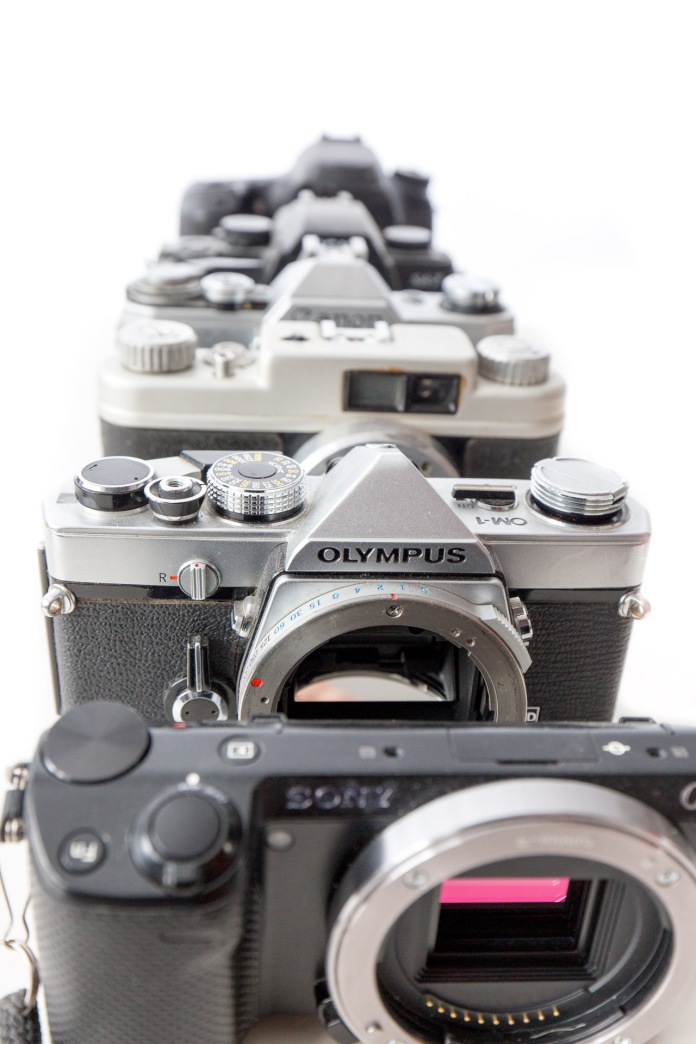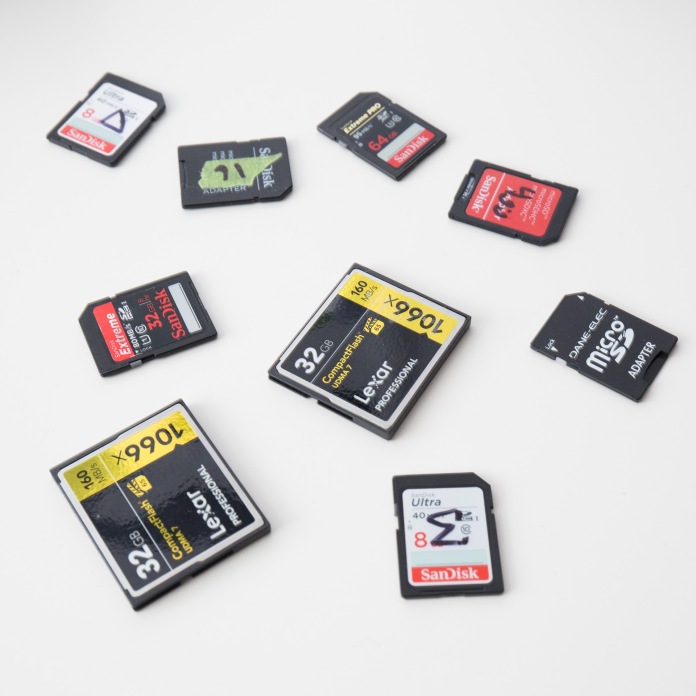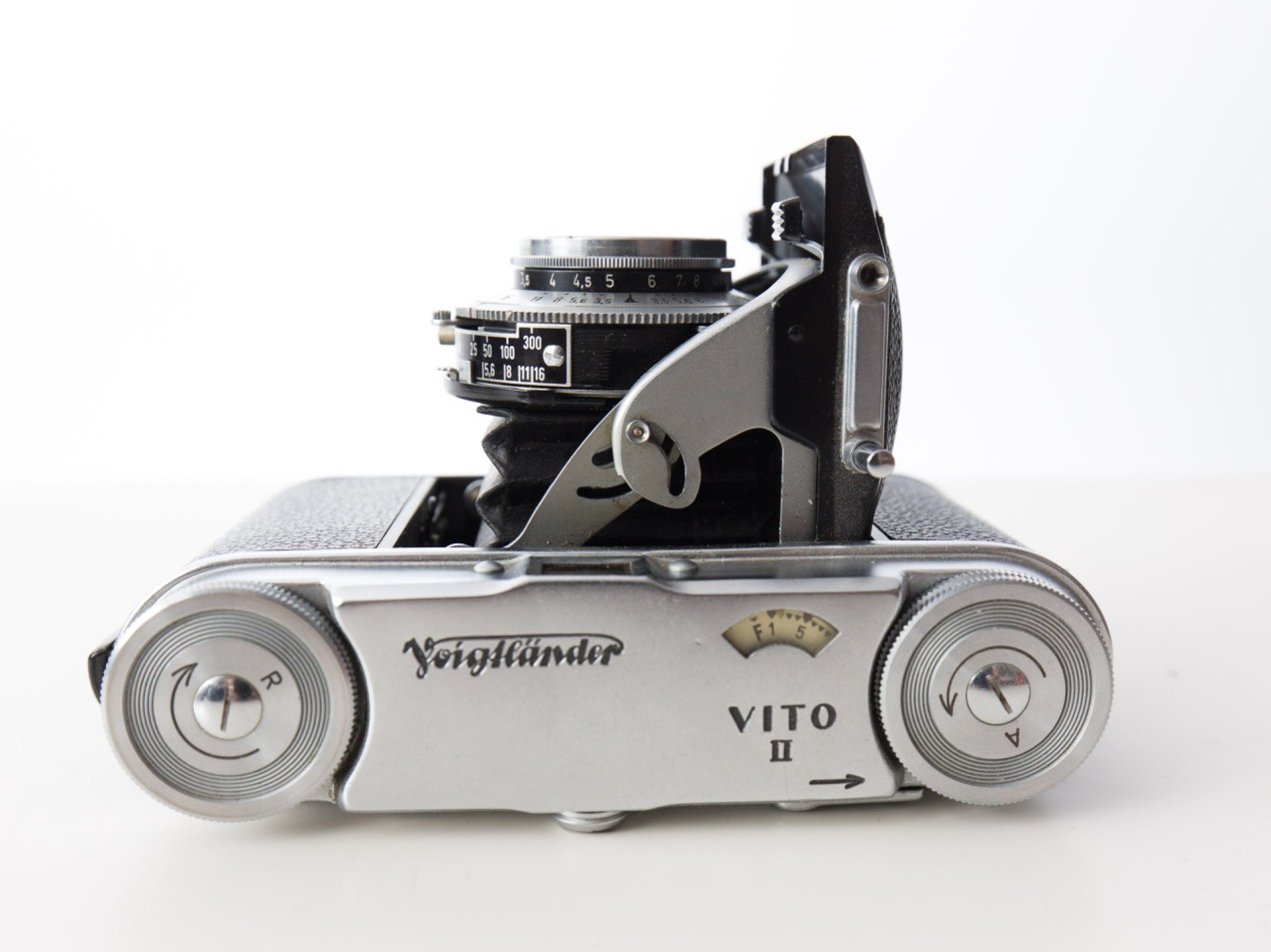Here’s a simple question…
What Does A Camera Do?
Okay, We should probably talk about what these things actually do. Pay attention, this is important. So what do camera’s do? You know, besides take pictures.
Camera’s are measurement devices and storage devices. They use optics (reflecting light through glass) in order to capture an image, save it, and transfer it elsewhere to be used.
Thing Cameras Do Number One: Take Pictures
Camera’s take pictures. They have a button that responds to the photographer (usually) to, at that moment, capture the light that is traveling through a lens (usually) into the camera (most of the time).
So, a camera is like an eye. Eyes see. Eyes see light. Cameras see light. With me so far?
Sometime’s it’s dark out, and other time’s it’s bright. Stay with me. Lights can be on dimmer switches. Right? Right. So light varies in brightness? Of course it does, you know this. You’ve seen a day/night cycle before.
Okay. So, if there isn’t light, there isn’t a photograph. It’s just black. No light = no photo. Camera’s need light. Too much light also means no photo – our photos will just be white. Something between white and black? That’s where an image appears. Let’s recognize light as having a brightness from zero to, uh, some big number. Infinity? (INSIDE OF THE SUN!?).
Camera’s have to change their settings to match this quantity of light, or else the image will be just black, or just white. We call this “overexposed” or “underexposed”.
An “exposure” is another shorthand word for an image from a camera, it refers to the process of capturing the light.

Thing Cameras Do Number Two: Adjust
Camera’s can adjust some properties in order to “let in” more or less light into the camera. They respond to the amount of light in the world in order to get the “correct” amount of light into the camera.
They also need to get this light in focus!
What does “correct” mean? We’ll get back to that later.
Camera’s also have controls that allow the photographer to adjust their settings. These are all those dials and knobs on the outside of fancy cameras. These are super important! Photographers can be picky about how their gear works, and have been reported to fight over what arrangement of dials and knobs is the best. Canon and Nikon users constantly fight over which direction to spin their lens adjustments is best.
So we change settings because we have to get the right amount of light into the camera! How do you know how much light to get into the camera?
Thing Cameras Do Number Three: Measure
Camera’s measure the amount of light in the world. They use this information to adjust themselves – “automatic” modes. Or just to inform you of it’s measurement, and the photographer controls the adjustments themselves – “manual” modes.
So once we capture an image that has the right amount of light… What now?
More on Metering.
Thing Cameras Do Number Four: Save Images
Cameras’s Store and Save images. Digital cameras convert the raw data from the sensor into a file format readable by computers (.jpeg), and store that image on a removable memory card so it can easily be transferred to the computer.
In addition to the image, the file also contains metadata (data about the data) like the current date and time, which is super helpful for organizing and sorting the images. JPEG’s are a universal file type – virtually every computer and printer can handle and work with these files. They have small file sizes and are fast to work with, making them an obvious popular choice for image storage.

Thing Cameras Do Number Five: Playback
Cameras have playback, which refers to the ability to look at the images you have taken on a little screen. You can also hook many camera’s up to TV’s or other screens. Most cameras let you delete and rate images, and mark an image as ‘protect’ images which won’t let you accidentally delete it.
Thing Cameras Do Number Six: View Settings
Camera’s also usually give you feedback about what they are doing! They tell you what your battery life, drive mode, shooting mode, aperture, shutter speed, focus mode, auto-exposure mode, remaining storage space, estimated remaining shots left, and more! There’s so much information! Camera’s look strange and complicated because of all this crazy stuff they are telling you.
This guide is going to break each bit of information down one at a time, so if there is something confusing on your camera – just ignore it for now. We’ll cover it soon enough.
Except for battery life. You should figure out where your battery life indicator is. Do that now. Don’t go out shooting with a dead camera! Your images can disappointing and it doesn’t matter because you had fun and learned a lot, but if you can’t even turn your camera on? Ouch. Not a good day. This is almost as important as not dropping the camera.
Let’s Review Because This Is Important
I know this is easy and I am being condescending – of course we all know what camera’s are – but I want you to really think about these aspects of cameras as separate, different, things.
We will be learning the in’s and out’s of the things cameras do at different times, so it’s important to be able to focus on each specific thing. One at a time.
Camera’s measure light, adjust settings, capture an image, and save the image. They let us view these images later, transfer them; and they let us change all sorts of settings and behaviors.
Different cameras do each of these tasks differently.
Many older cameras, for example, couldn’t measure light at all. Photographers got really good at guessing (measuring with our own eyes!) as well as using external tools, appropriatly called “light meters”. Some cameras have many settings fixed and unchangeable. Some camera’s have all mechanical knobs for everything, some cameras use a touchscreen for everything, and everything in between. But the underlying properties of all the settings, adjustments, and why to make them is the same.
In other words, we are trying to learn the underlying principles. How to use a specific camera isn’t very helpful, but by learning these principles you can use any camera.
Learning this is learning photography!
